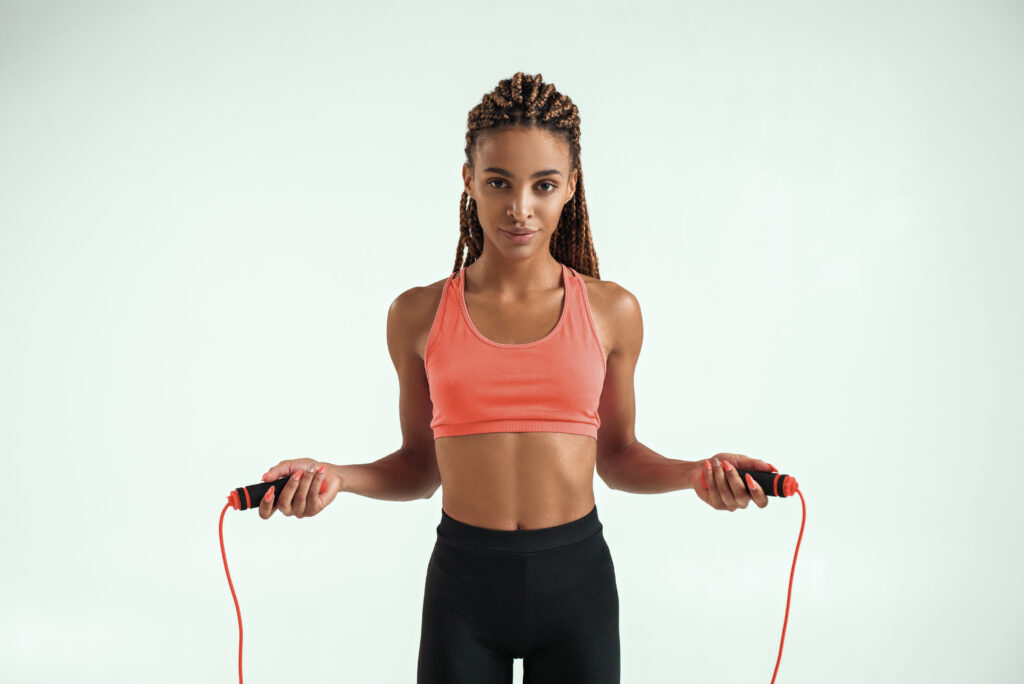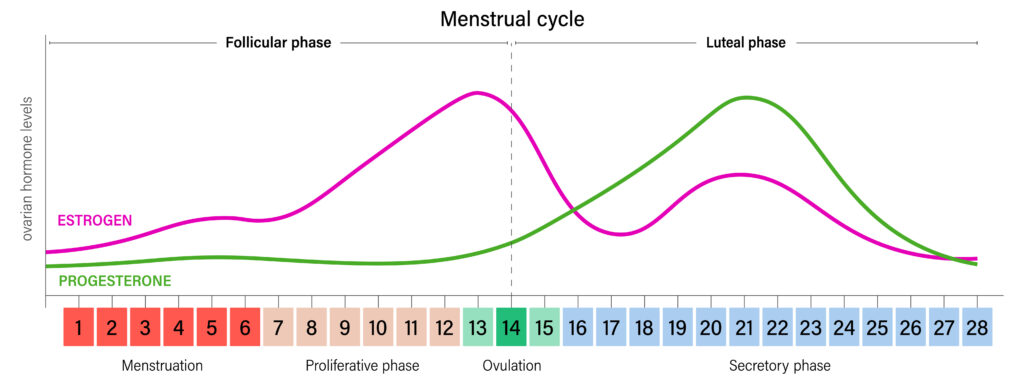Menstrual Cycle Hormones for Athletes

If you’ve ever seen a graph of the menstrual cycle hormones, it looks like some kind of terrifying theme park ride with peaks and quick dips and tracks crisscrossing all over. Most of us haven’t really thought about them since middle school. But healthy hormone levels and menstrual cycle are important for athletic performance, health, and well-being. So let’s review the key menstrual cycle hormones for athletes!
Four Menstrual Cycle Hormones for Athletes to Know
There are four hormones you often see on a menstrual cycle graph:

- luteinizing hormone (LH)
- follicle-stimulating hormone (FSH)
- estrogen
- progesterone
Luteinizing Hormone (LH)
LH isn’t a hormone you hear much about. But it’s a key player in the hormone game. LH stimulates the ovaries to do several things. First, it tells the ovaries to ovulate (release an egg) every month (28 days is the textbook average, but it’s different for everyone). Second, it tells the ovaries to make progesterone and estrogen. When you experience low energy availability, like with RED-S, LH becomes low and can result in missing or irregular periods. Think of LH as the messenger between your brain and ovaries, where your brain tells your ovaries what to do (ovulate and make hormones).
Follicle Stimulating Hormone (FSH)
FSH does exactly what it sounds like it does- it stimulates the growth of ovarian follicles. Every month the ovary has several follicles, and only one grows to become the dominant follicle and is eventually released as an egg. It also increases estrogen production. FSH and LH both travel from the brain to the ovaries to deliver the “let’s ovulate” message to the ovaries. Similar to LH, FSH often decreases with low energy availability and can cause irregular and missing periods.
Estrogen
Estrogen often gets a bad rap, but it does so much to help athletic performance and overall well being. This hormone boosts energy levels, mood, and even sharpens mental focus. It stimulates the growth of the uterine lining and facilitates the release of LH and hence, ovulation. Estrogen gets two times to shine as it rises and peaks in the first half of the menstrual cycle (the follicular phase) and it also rises during the luteal phase (second half).
Progesterone
This hormone rises after ovulation and peaks mid-luteal phase, and decreases the last week of the menstrual cycle. Progesterone’s main role is to maintain the uterine lining and prepare the body for pregnancy. If no egg is fertilized, progesterone decreases and the uterine lining sheds (AKA you get your period).
Are My Menstrual Cycle Hormones Normal for an Athlete?
It’s important for female athletes of reproductive age (not on hormonal contraception) to have a healthy menstrual cycle and hormone levels. Normal, consistent menstrual cycles are a good sign that your hormones are likely working well and are at a healthy level.
But, if you have a missing or irregular period, or you just want to see what your hormone levels are, check out the ABT.she panel to measure LH, FSH, progesterone, and estrogen. You can see these hormone levels in addition to many other biomarkers related to training tolerance, micronutrient status, hydration, red blood cells, iron, and so much more. By measuring your hormones you can see if your training and nutrition are negatively impacting hormone levels and therefore likely impacting your performance. It’s possible to see low hormone levels before your performance decreases or symptoms develop. This means you can course correct sooner and move towards your goals more efficiently.
More Information.
Check out our Knowledge Hub articles for more information on training with your cycle, birth control for athletes, LEA and REDS, and what constitutes a normal menstrual cycle for athletes. For resources on Relative Energy Deficiency in Sport, we highly recommend checking out Project RED-S and anything from our friend Dr. Nicky Keay.


